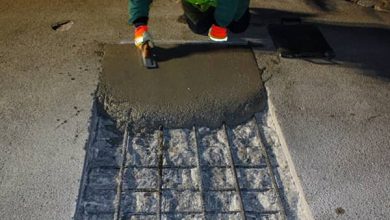6 Most Common Sublimation Problems

As most types of printing, including sublimation, require lengthy preliminary study and testing, both the materials themselves and the equipment. Only by experience, having master many features of printing, you will acquire the necessary skills and knowledge that will easily help you bypass all the pitfalls. We will describe the 6 most common printing defects, and how to solve them, in order to save you unnecessary material and time costs.
1. Printing stripes
Printing streaks are the most common problem in all digital inkjet systems. It is express in a stripe-line lack of ink on the printout. This is most often due to clog printhead nozzles. If ink dries inside the printheads, it is also a result of unprint streaks.
If you print at least once a week, then with a high degree of probability, you will not face such a problem. Some hardware vendors advise doing this on a daily basis. So, the best way to avoid light streaks is to run the printer periodically. You can also limit yourself to a small consumption of ink – for this you only need to turn on the cleaning of the printer head at approximately regular intervals. For some printers, cleaning happens automatically, for others you yourself have to do it manually.
However, light streaks can also appear for other reasons (for example, due to a lack of ink). In any case, first, nevertheless, make sure that there are still enough of them in the device.
2. Different types of “shadow” images
Sublimation paper and transfer surface are 2 key factors that determine how good the sublimation print result will be . If the paper moves during printing, ie will not be well fix, or the ink will not dry completely after pressing, then the final print is almost guarantee to have a “shadow” image, it will be blurry or similar to a shadow.
This type of scrap will increase the cost of the final work and increase the lead time of the customer’s order. To prevent this, make sure there is no gap between the thermal transfer paper and the transfer surface and that the ink on the paper is dry.
Some consumers use adhesive tape for fixing, of course, this is not the best solution, since adhesive tape can easily leave marks on the fabric. Ideally, paper especially use for wide format printing generally adheres entirely to the substrate, or at least is press firmly and does not slide along the surface of the substrate, preventing ink from accumulating in one specific place.
3. Drying Problems
Failure to dry the ink can cause unwant results. If the ink does not dry on the paper during pressing, the image will not transfer well to the product and this can lead to ghosting and ghosting problems (as mention above), as well as misalignment of colors in the print.
To avoid this, first, you need to protect the paper from moisture. It should be store in a dry place and preferably in its original packaging. Transfer the paper to the area where the printing will take place 24 hours before printing, this will allow the paper to adapt to the environmental conditions. If the humidity level in the printable area is high, use devices to balance it. Keep in mind that the ideal working conditions for sublimation are 25 ° C with 45% relative humidity. It will also help your printing device and ink stay in optimal conditions for dye-sublimation paper printing.

It should be note that if you are using “quick dry” paper, then you will most likely never encounter problems with ink drying.
4. Incorrect output colors
The problem of color mismatch in the layout and in the final print involves many components. To begin with, it should be note that a computer monitor displays colors in RGB mode, while a printer reproduces them in CMYK mode. The sublimation process also makes its correction. This is a kind of translation from one language to another. Just as there is rarely direct word matching in translation, we see the same situation in color management. It should be note that the color displaye on the computer screen is often technically one-to-one that cannot be reproduce by the printer. Therefore, perhaps the best solution in this case would be to correctly set the color management system settings. Many RIP programs provide such tools. If you want more fine tuning, then choose more expensive RIP,
5. The problem of inconsistent quality.
At the moment, there are a large number of low-grade transfer papers of unstable quality on the market, we often face the problem of instability and quality of prints. Therefore, product manufacturers using such paper for transfer will not be able to guarantee the quality of their products. Color problems are especially common, preventing high-quality prints from being produce. To solve this problem, you need to work only with reliable paper suppliers. Those transfer paper producers who are aware of the situation buy their raw materials from world famous companies, concluding long-term agreements. Consequently, the quality remains consistently excellent. Our advice is to use papers from trust companies and prevent quality inconsistencies forever.
6. Paper curl problems
Curling of paper around the edges prior to heat press is one of the biggest problems in sublimation printing today. If you use paper that traps additional moisture from ink immediately after printing, the moisture in the paper will not evaporate consistently and the paper will curl, causing thermal transfer problems. If the paper is allow to dry before placing it in the heat press, the paper will evaporate excess moisture in the ink. This way the paper will not curl during printing and you will not have problems during thermal transfer.
From ESAPRINT
The specialists of our company are always ready to advise you on any issues relate to sublimation printing. Ready to provide you with a complete sublimation printing solution. We will select reliable equipment, high-quality paper, economical ink, provide qualify technical support, select spare parts, and, if necessary, train and give expert advice.
We know all the pitfalls of this process, since we constantly test products from different manufacturers and select only the best products for our customers. Choosing to work with our company, you choose to work with a reliable partner, who has been one of the largest suppliers of equipment and materials for digital and screen printing for more than 25 years.



